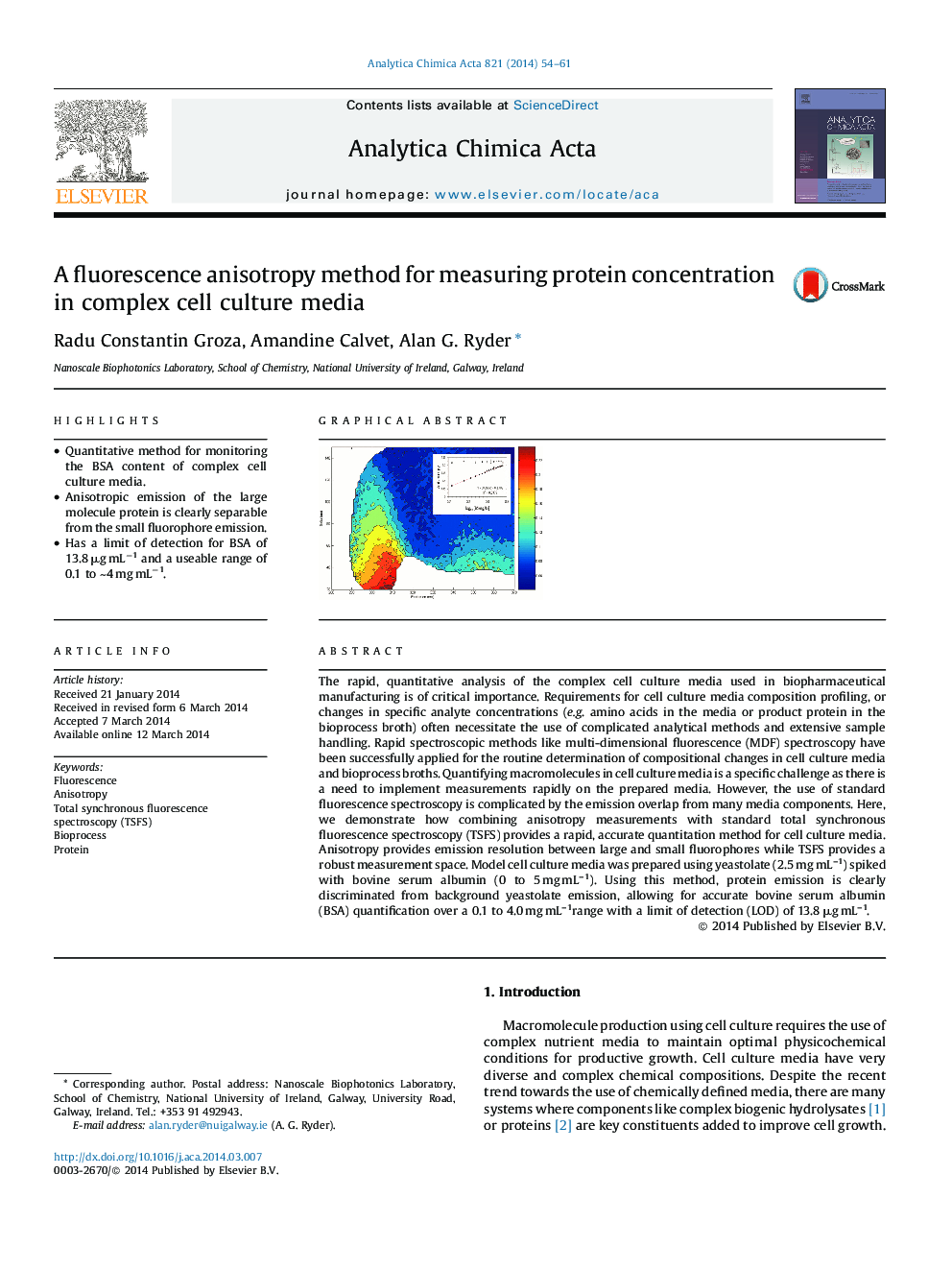| Article ID | Journal | Published Year | Pages | File Type |
|---|---|---|---|---|
| 1164952 | Analytica Chimica Acta | 2014 | 8 Pages |
•Quantitative method for monitoring the BSA content of complex cell culture media.•Anisotropic emission of the large molecule protein is clearly separable from the small fluorophore emission.•Has a limit of detection for BSA of 13.8 μg mL−1 and a useable range of 0.1 to ∼4 mg mL−1.
The rapid, quantitative analysis of the complex cell culture media used in biopharmaceutical manufacturing is of critical importance. Requirements for cell culture media composition profiling, or changes in specific analyte concentrations (e.g. amino acids in the media or product protein in the bioprocess broth) often necessitate the use of complicated analytical methods and extensive sample handling. Rapid spectroscopic methods like multi-dimensional fluorescence (MDF) spectroscopy have been successfully applied for the routine determination of compositional changes in cell culture media and bioprocess broths. Quantifying macromolecules in cell culture media is a specific challenge as there is a need to implement measurements rapidly on the prepared media. However, the use of standard fluorescence spectroscopy is complicated by the emission overlap from many media components. Here, we demonstrate how combining anisotropy measurements with standard total synchronous fluorescence spectroscopy (TSFS) provides a rapid, accurate quantitation method for cell culture media. Anisotropy provides emission resolution between large and small fluorophores while TSFS provides a robust measurement space. Model cell culture media was prepared using yeastolate (2.5 mg mL–1) spiked with bovine serum albumin (0 to 5 mg mL–1). Using this method, protein emission is clearly discriminated from background yeastolate emission, allowing for accurate bovine serum albumin (BSA) quantification over a 0.1 to 4.0 mg mL–1range with a limit of detection (LOD) of 13.8 μg mL–1.
Graphical abstractFigure optionsDownload full-size imageDownload as PowerPoint slide
